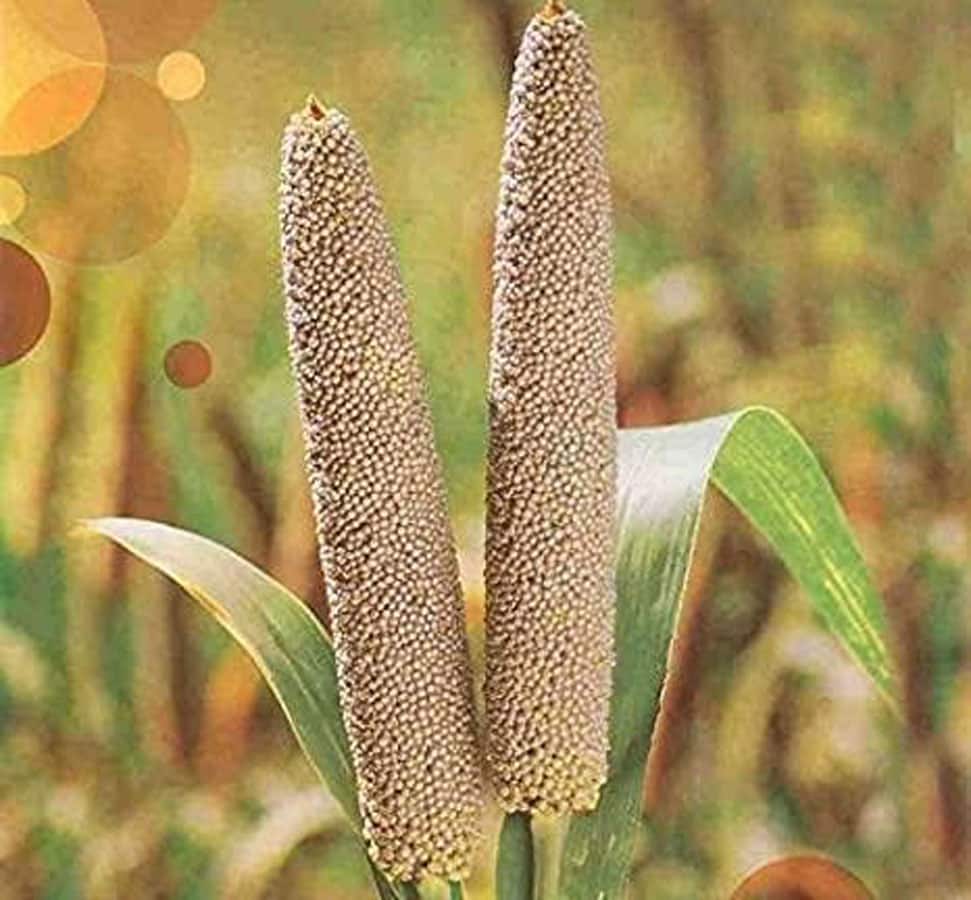It’s nutritious. Drought-resistant. And yes, you can make it into alcohol. No wonder the UN declared 2023 the International Year of Millets.
The consumption of millet has declined relative to other grains in recent decades, but the India Millet Initiative (http://indiamilletinitiative.org/index.php) is looking to turn this around. Government officials and scientists hope to help India’s smallholder millet farmers by inspiring more research and innovation in cultivating better millets while encouraging greater millet consumption—in other words “to create domestic and global demand and to provide nutritional food to the people,” as Indian government officials laid out in a press release.
The Indian government believes that millets could be the next big thing, a superfood destined to become a major global staple. And it wants you to believe it, too.
Ideal for dryland smallholder farms
“Millets are a rich source of nutrients and minerals and are resistant to drought and stress in rainfed farming.”
Millets are a category of seeded grasses or reed-like crops that grow well in drier climates, attracting the interest of agricultural officials worried about the impacts of global warming. India’s Ministry of Information and Broadcasting offers a more precise definition in its press release. “Millet is a common term to categorize small-seeded grasses that are often termed nutri-cereals or dryland cereals, and includes sorghum, pearl millet, ragi, small millet, foxtail millet, proso millet, barnyard millet, kodo millet, and other millets.” They’re generally easy to grow since they require less water than other crops, less caretaking, and they can withstand hotter weather. They stand out for their nutritional profile, too. Millets are rich in amino acids, iron, zinc, and protein. They also provide good fiber.
“Value-added, minimally processed products will pave the way.”
There are other reasons why India would like the world to eat more millets. Smallholder farms dominate millet production, and India is the world’s largest millet producer, growing about 41% of total global supply in 2020. Production has been rising steadily to meet growing domestic demand. India’s millet exports are also on the rise. Scientists say this is a good thing as more millet consumption can lead to better health outcomes and even combat obesity and diabetes.
“The minor millets are a rich source of nutrients and minerals and are resistant to drought and stress in rainfed farming,” researchers at the ICAR-Indian Agricultural Research Institute wrote in a 2017 overview. “Millets are adapted to a wide range of ecological conditions and are often grown on skeletal soils that are less than 15 centimeters deep.” Thus, they seem to be a perfect solution for dryland smallholder farmers.
The trick is getting more people to eat millets and finding more ways to expand the market for these superfoods. Most of India’s millet exports go to the Middle East and North Africa. India’s largest single export customer is Nepal. Only the United Kingdom ranks as a major Western Indian millet destination, purchasing about 2% of India’s millet exports according to Ministry of Information and Broadcasting data.
Better millet products, better millet processing
Experts think some keys to popularizing millets are new millet-based products and better millet processing technologies. “Positioning of millets in the form of value-added, minimally processed products will pave the way,” Dr. Raj Bhandari, a member of India’s National Technical Board of Nutrition, told NDTV in an interview last year.
But there are hurdles to overcome here, as agricultural researchers S.D. Deshpande and P.K. Nishad pointed out in a deep-dive published last year. “Despite a rich nutritional profile, some inherent features like hard seed coat, anti-nutritional factors, poor digestibility, and low micronutrient bioavailability are the major hindrances in the processing and cooking of millets.” De-husking and milling the edible grains can be back-breaking work. There are some technical solutions to this problem, but the sector needs better ones.
Once processed, millets need to be made more usable and appealing to a broader swath of customers. Deshpande and Nishad suggest more production and marketing of millet flours or selling millets in the form of dried snacks like crackers or puffed wafers. They even propose millet-based pasta. “Noodles and pasta are widely consumed food products among all the age groups in both developed and developing countries,” the two researchers noted. “Compared to other products, noodles and pasta have a longer shelf life and economic significance” (https://link.springer.com/chapter/10.1007/978-981-16-0676-2_14).
Millet is the sort of emerging–or re-emerging–crop that gets us excited at Grow Further. And we hadn’t drunk too much raksi when we wrote that.
— Grow Further
Photo credit: Pearl millet. India Millet Initiative




